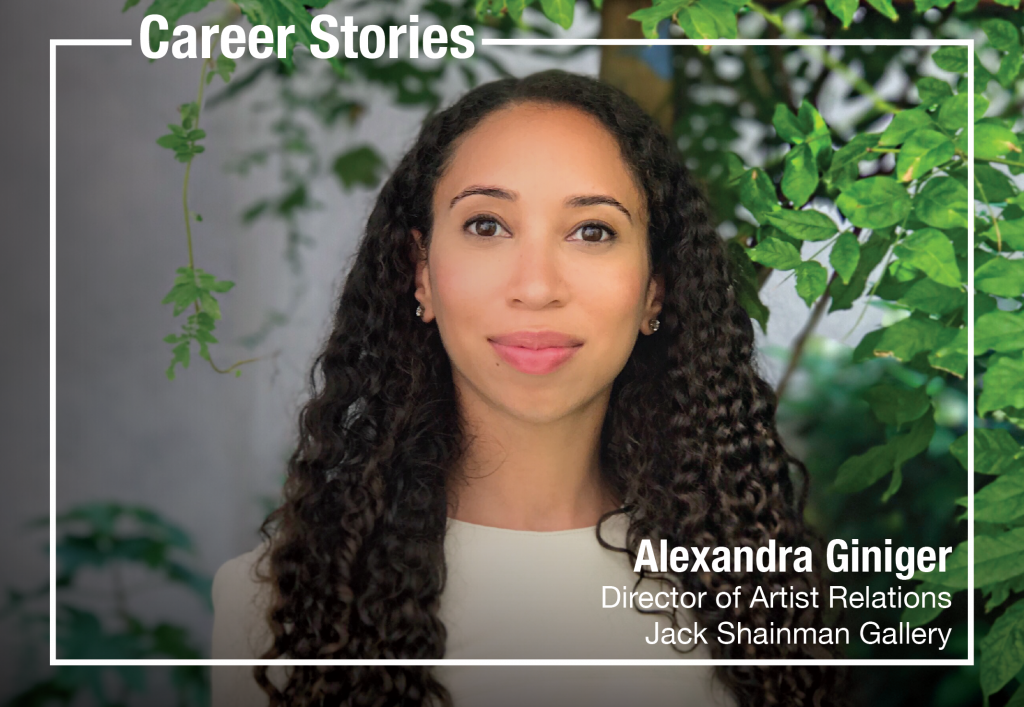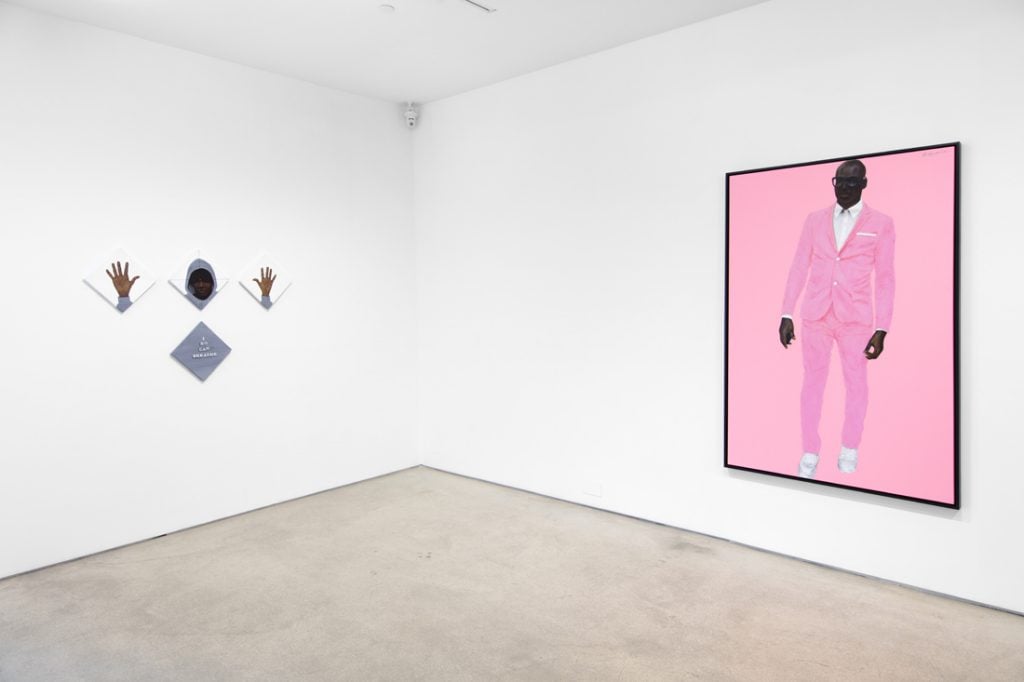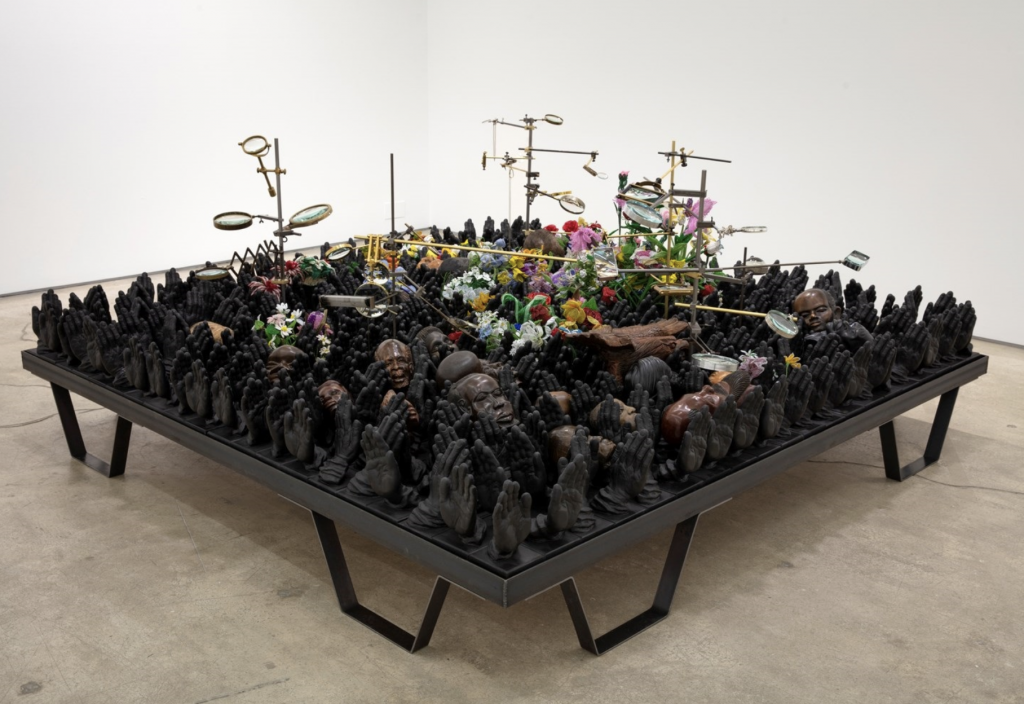Career Stories
Jack Shainman’s Artist Whisperer Alexandra Giniger on How She Went From an Intern in Awe of Barkley Hendricks to Working With His Estate
Giniger shares her path to becoming the director of artist relations at Jack Shainman.

Giniger shares her path to becoming the director of artist relations at Jack Shainman.

Katie Rothstein

No two paths to a successful career in the art world look the same. In our series “Career Stories,” we’re checking in with some of the high-powered people in the art industry to hear about everything from their first brushes with art to the advice they would give their younger selves.
Growing up, Alexandra Giniger was always intrigued by creative expression.
“I was first exposed to art history in high school, and loved learning about the narrative of the world in this way,” Giniger says. After working as the studio manager for artist Wangechi Mutu, she took a role at Jack Shainman Gallery, where she now serves as the director of artist relations for the gallery’s roster—an impressive list that includes such heavy-hitters as Kerry James Marshall, Carrie Mae Weems, El Anatsui, and Barkley L. Hendricks, as well as contemporary stars Nina Chanel Abney, Lynette Yiadom-Boakye, and Toyin Ojih Odutola.
We caught up with Giniger to hear about her journey from museum intern to a gallery director working with some of the leading contemporary artists of our time.
What was your first job in the art world? What’s one lesson you learned from that job?
My first professional experience in the art world was through an internship in the PR and publications department at the Studio Museum in Harlem. It was so fulfilling to be immersed in that world. I finally felt like I was home. One of my many takeaways was that while the Black art world is infinitely rich and encyclopedic in scale, the artists I was exposed to during my time at the Studio Museum were jarringly absent from any of my art history textbooks and courses. Prior to this experience, I felt wholly unrepresented in the art world that was being presented to me in academic and institutional spaces. This was deeply troubling to me and I knew that I had to dedicate my career to rectifying our visibility.
What exhibition had the biggest impact on your career, or left a lasting impression?
My brief time at the Studio Museum happened to overlap with both Barkley L. Hendricks’s “Birth of the Cool” and Kehinde Wiley’s “The World Stage: Africa, Lagos~Dakar,” two profoundly influential exhibitions for me. I remember walking up to Barkley’s 1969 Lawdy Mama painting, and for the first time I felt that I saw my family, my heritage, reflected within museum walls. I currently work very closely with the Hendricks estate at Jack Shainman Gallery, which is something I don’t think I ever could have conceived as a 20-year-old viewing that body of work for the first time. I can see now, though, the ways in which being exposed to Barkley’s work at the nascent stage of my career has underscored the entirety of my professional drive.

An exhibition of Barkley L. Hendricks’s work at Jack Shainman Gallery in 2016. Courtesy of Jack Shainman Gallery, New York.
How does your previous role as a studio manager for an artist inform your role as director of artist relations at Jack Shainman?
Being the studio manager for an internationally renowned artist really was my core training for where I am today. Wangechi [Mutu] entrusted me to be the public voice of her practice, which enabled me to forge relationships with international curators, gallerists, and artists. I entered the gallery world because I wanted to work with other artists in the capacity that I worked with Wangechi, which is what inspired my position at Jack Shainman. While I do participate in sales and art fairs, my main focus is managing the incredible artists on our roster.
What is something you think should shift in the gallery business?
We are two months out from one of the most important presidential elections of our lifetime and are living three months after the police murder of George Floyd that sparked this country’s most recent racial justice uprising. In an art market that is finally paying attention to Black creatives, the galleries that represent these artists need to be actively engaged in the dialogue of equity. Galleries serve as advocates for the artists we represent and we need to ensure that collectors understand the art on their walls in depth, beyond simply the artist’s name.
What’s in your personal collection?
I have been lucky enough to work from home while surrounded by some powerful pieces, many of which are by artists who I consider friends, including Derrick Adams, Zoë Buckman, Meena Hasan, Tahir Karmali, Dread Scott, Paul Anthony Smith, and Wangechi Mutu. I also spent time with my in-laws, seated for seemingly countless hours underneath a gorgeously sunny Richard Mayhew, which has provided me a ray of hope.

Nick Cave, Untitled (2018). Courtesy of Jack Shainman Gallery.
Whose artwork do you think is especially important to the current zeitgeist?
I am very excited about the gallery’s new initiative, States of Being, which is dedicated to the gallery’s public engagement with social and racial justice work. An evolving program of interventions, happenings, and community outreach, States of Being is an opportunity to collaborate with creators and voices beyond the gallery’s immediate organization. An example of one of these outputs is Helga Davis’s call and response to a multimedia sculptural installation by Nick Cave. Davis, a powerful vocalist and performance artist, serenaded Cave’s work with an incredibly raw and personal rendition of the American national anthem. Davis first confronted the artwork at the time of her performance, which was filmed in one take, unrehearsed, and is poignantly emotional and urgent. I think that these collaborations and cross-pollinations across industries will be critical as we fight to dismantle the inequitable systems in place.
Do you have a mentor?
I have found inspiration, community, and mentorship among many of my colleagues and friends. I am a part of a collective of Black women gallerists and entrepreneurs called Entre Nous. We’re a source of tenacity, knowledge, and humor for each other. I am so grateful for these women!
If you could give one piece of advice to your younger self at the start of your career, what would it be?
Although your goals may feel abstract at times, never lose sight of them, and remain true to yourself and to your mission. Be open to learning what drives you along the way and follow those passions with an expanded mind.